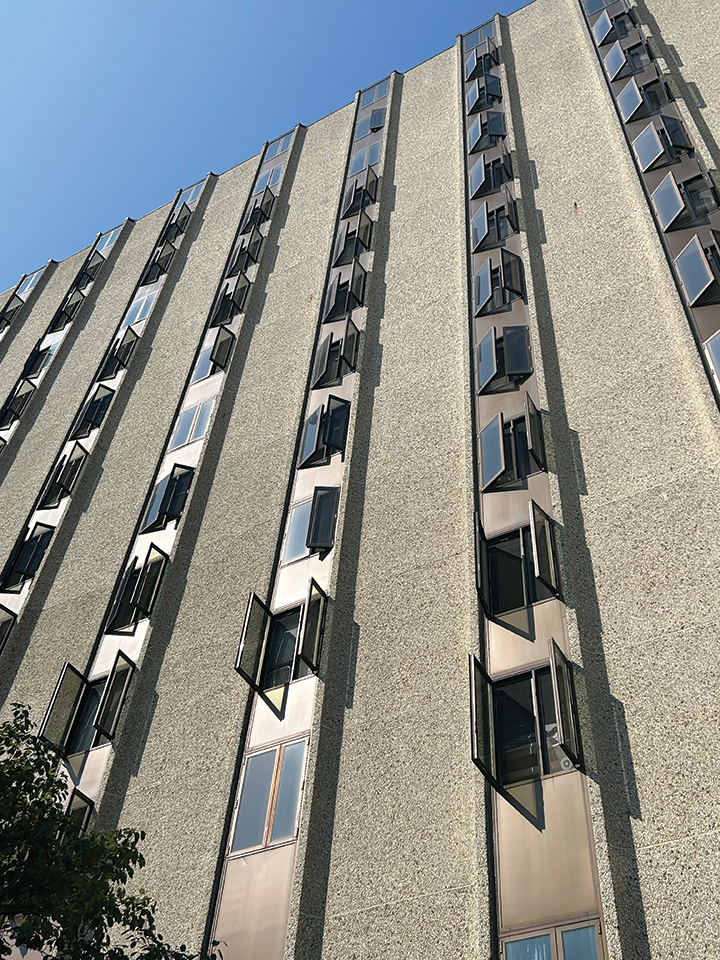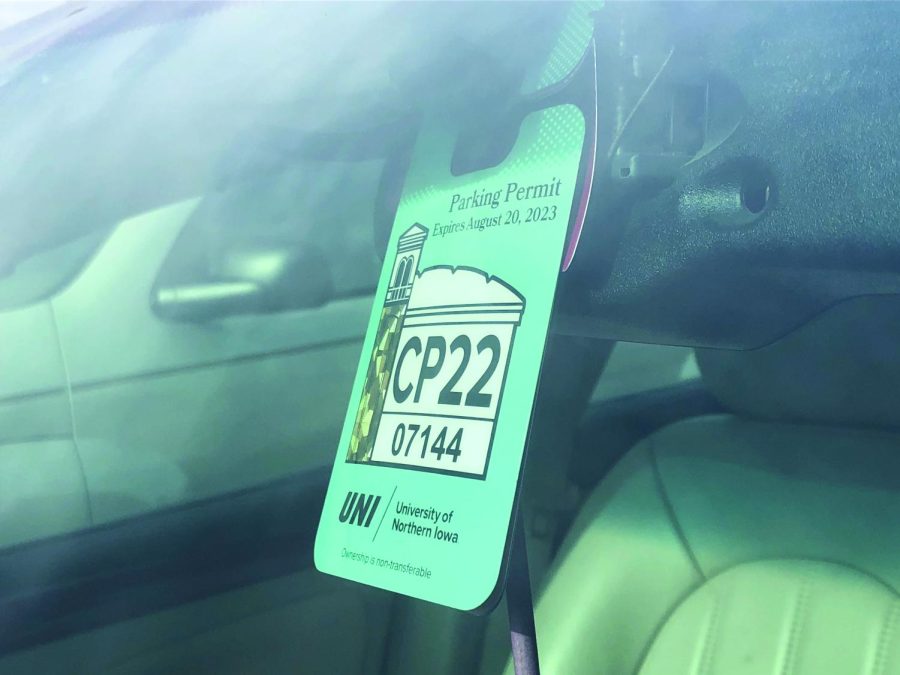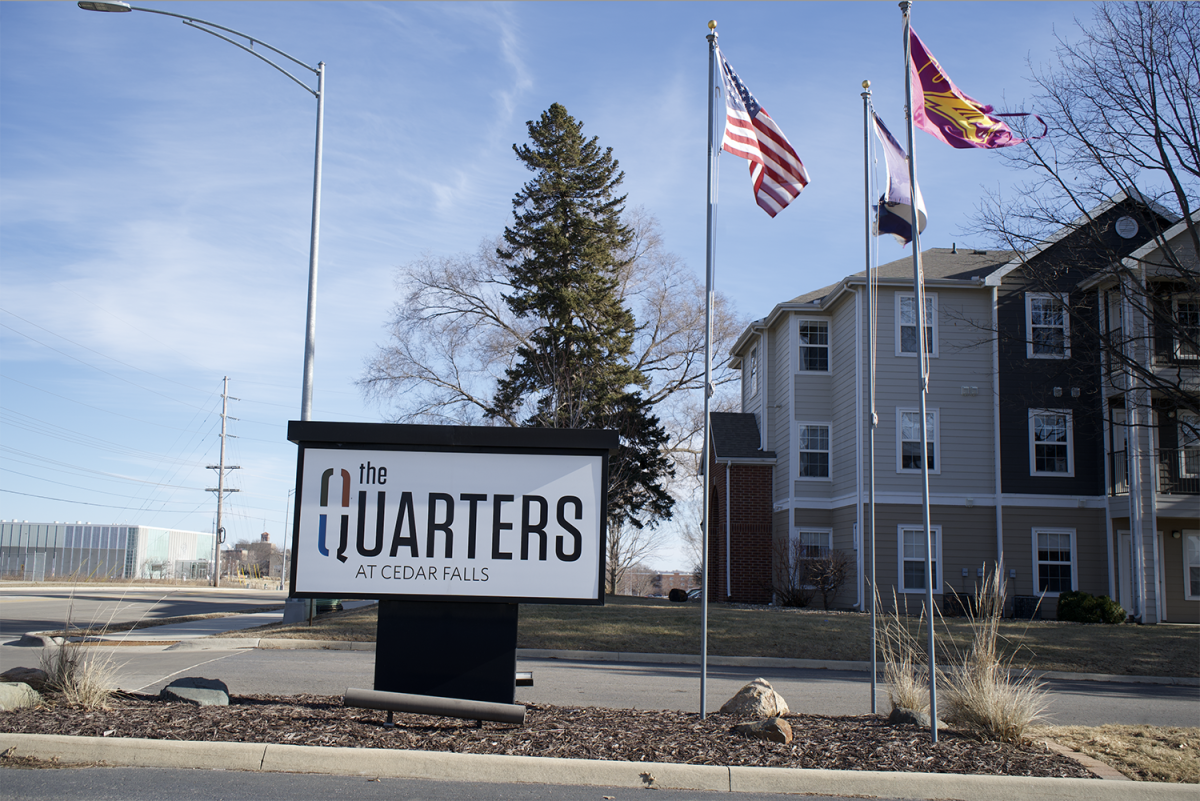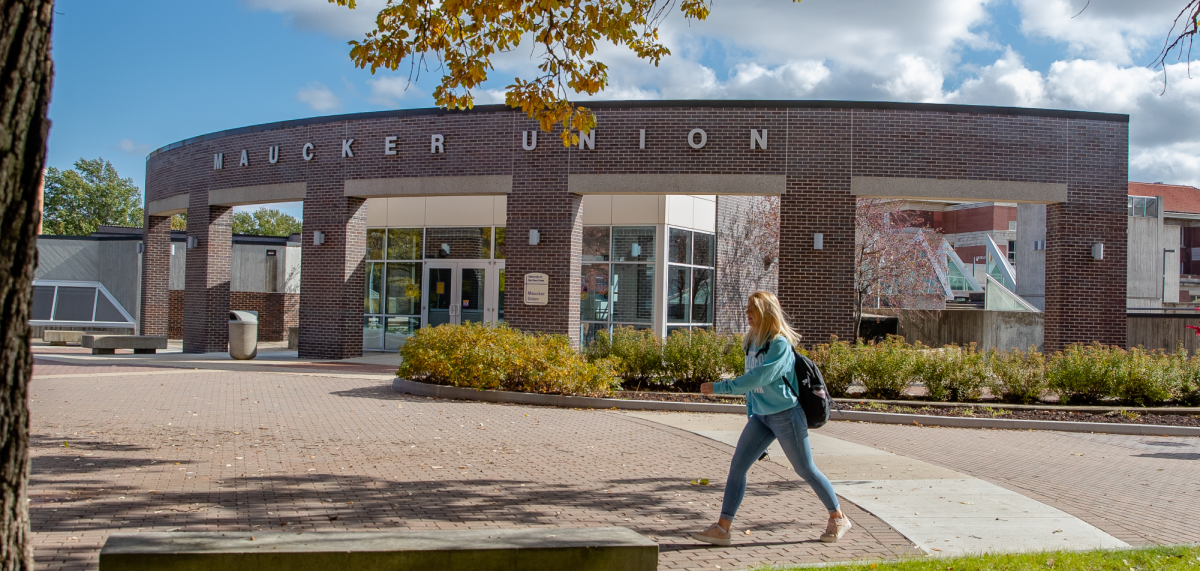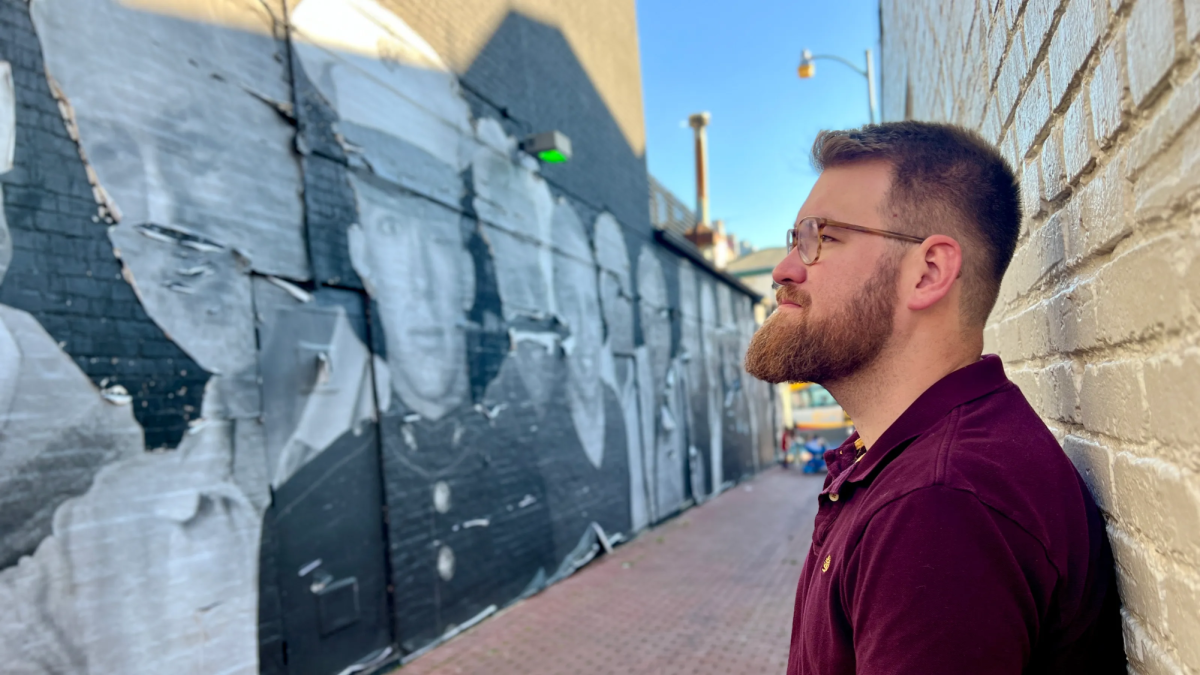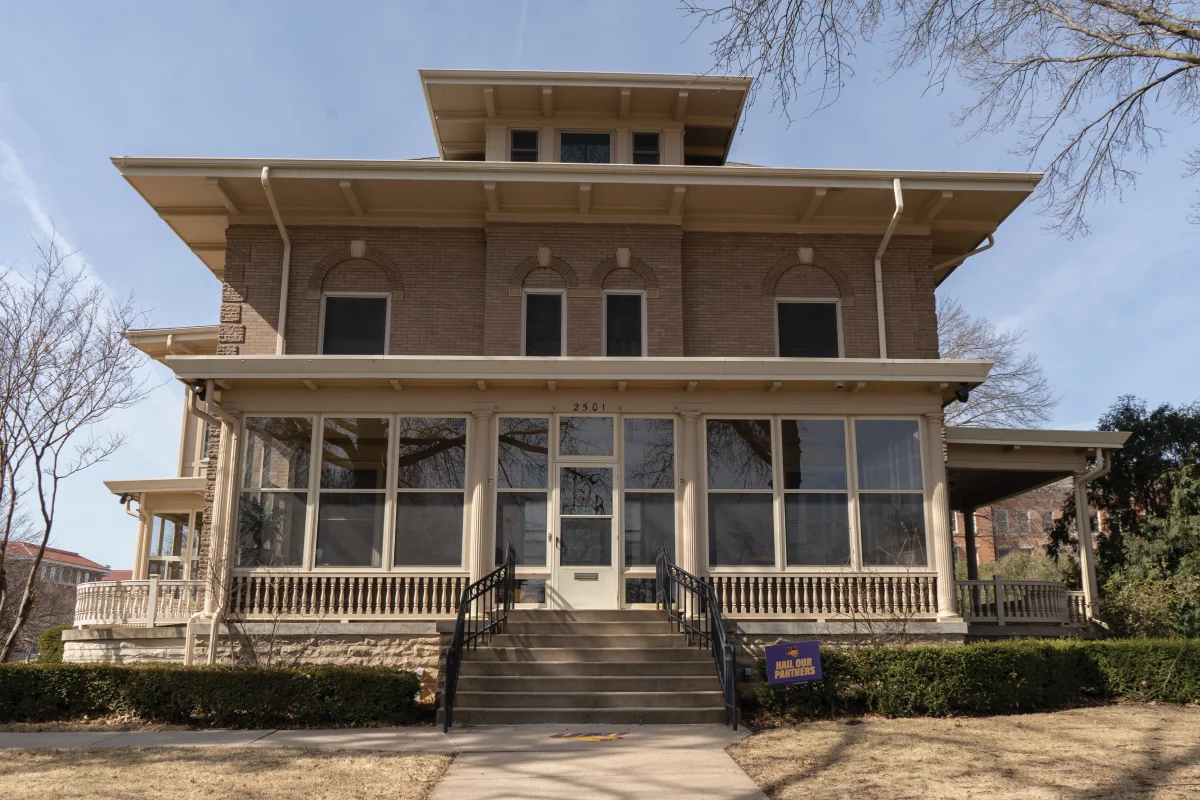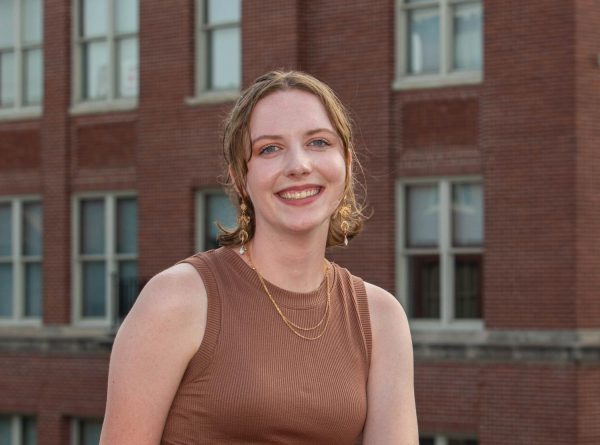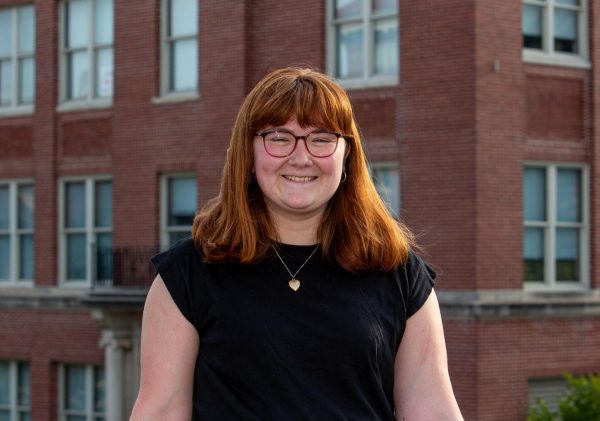For transfer student and Dancer resident Makenna Arbogast, her numerous fans were in full blast to stave off the stifling heat brought on by the record breaking heat wave during the first week of classes.
“Throughout the whole week I was excessively sweating,” Arbogast said. “I also had to sleep in the lounge for a couple nights because I had to get some sleep somehow.”
The entire state of Iowa experienced sweltering heat the first week of classes, with temperatures reaching their peak at 105 degrees on Wednesday, Aug. 23. Six of UNI’s ten dorms do not have air conditioning: Rider, Hagemann, Schull, Noehren, Dancer and Bender. According to Annie Karr, the Associate Director of Marketing for University Housing & Dining (UHD), “UHD sent out an email to all residential students living in non-air conditioned buildings about the various places they had access 24/7 to find relief from the heat. Additionally, we allowed students to sleep in air conditioned spaces throughout the buildings.”
Given the excessive heat, many students living in these dorm halls found creative ways to keep cool.
For freshman Noehren resident Oscar Spurgeon, he decided to sleep outside in his camping hammock during the particularly hot days.
“It was better outside than it is inside 100%,” he noted. Spurgeon would move his hammock every night and bring a light blanket along with him.
“It was like Where’s Waldo, but where was Oscar sleeping tonight,” he added. When the sun rose, he would pack up his hammock, shower in the dorms and head to class.
Freshman Rider resident Olivia Walley froze paper towels to keep cool, while sophomore Dancer resident Kaya Baca used cold showers, ice packs and fans. Although Baca grew up with no air conditioning, she admitted the heat and humidity of those first couple weeks made it difficult to cope.
For many residents, the heat exacerbated the stress and uncertainty of navigating the first week of college. Freshman Hagemann resident Taylor Fundermann experienced increased stress related to the heat.
“It heighted my anxiety, it was really bad,” Fundermann said. “The stress and anxiety were through the roof because it was so hot and you couldn’t be comfortable even during the night because you were sweating in your sleep.”
Walley said the effects were widespread, adding, “Morale was low. Everybody was feeling the same way. We kept asking ourselves, ‘oh my god, what are we doing here?’”
Many students also experienced health concerns related to the heat. Freshman Hagemann resident Isabella Pote passed out on the floor of the Hagemann bathroom due to dehydration and heat exhaustion the second day of classes.
“My vision was super wonky and I couldn’t really see,” Pote said. “I tried to stand up and my vision felt super woozy. I went to wash my hands at the sink, and I woke up on the floor. I eventually tried to walk down the hallway but I went back down in front of the lounge. Then the RA found me and I went to the hospital.”
Spurgeon also passed out due to the heat, and felt sick the entire first week of classes.
“It was so hot outside and I kept drinking water and I kept throwing it up,” Spurgeon recalled. “It was a whole ordeal. I was super stressed about it because it was my first two days of college, you know, I want to survive.”
On Aug. 23, the height of the heat wave, Spurgeon headed up the stairs to his dorm but felt a wave of sickness come over him.
“I stood in the hall and just panted like a dog for a minute,” Spurgeon said. “I stumbled into my dorm, packed a bag, I picked it up. We went down the stairs, and we made it about to the parking lot and that’s where I felt super lightheaded and I saw the black spots and the rings around my vision. I told my roommate, “I’m going down, I’m not going to make it.’’’
Spurgeon veered off into the grass and fainted.
“I was laying in the shade in the grass, star-fished out. I just couldn’t move, and it felt like I was going to throw up. It was terrifying. My roommate got me up, I drank a bunch of water, and I threw up in his car. That was a situation in itself.”
He was able to stay at a friend’s air conditioned house for the night, and felt much improved. “As soon as I got in the AC my body just felt more relaxed,” Spurgeon said. “The headache kind of went away, but I had a headache a few days after.”
Freshman Rider resident Natalie Clark experiences chronic migraines, and noticed they got excessively worse due to the heat.
“I would lay on the futon with the fans blasting and put an ice pack on my head, but in 20 minutes it would be melted,” Clark said.
Sarah Behrends, the Director of the UNI Student Health Clinic, says symptoms to watch for when it comes to heat-related illnesses include high body temperature, altered mental state of behavior, flushed skin, decrease in sweating — skin may feel hot and dry to the touch as well as nausea and vomiting.
Many students were surprised to learn that many of their professors were not aware of the lack of AC in the dorms.
“I find it really weird that not a lot of professors know about it,” Clark said. “I noticed no one really said anything about it. They would be like, ‘it’s hot make sure you stay in air conditioning,’ but I don’t know that they understood that to sleep we had to be in really awful conditions. They weren’t informed about how bad it was.”
Students could submit a request for an air conditioner through Student Accessibility Services, however Dancer and Bender cannot have air conditioning units due to safety concerns.
According to Karr, installing air conditioning in the dorms would be a financial hit to students.
“Housing & Dining annually reviews its facilities; assessing the amenities and conditions of the halls to determine what improvements can be made while working to limit the financial impact on students,” Karr said. “As one might imagine, air conditioning all of the buildings would have a significant financial impact on students.”
Some students, like Arbogast, hope the university will consider installing AC in the dorms.
“Taking steps in the future to make sure all dorms have AC I think should be a goal for the university,” Arbogast said. “Especially because with climate change and the years in the future it’s only going to get worse. At this point it would just be a safety hazard for students if they aren’t getting some sort of AC.”
According to a 2023 report from Iowa State University, the Midwest is expected to experience the largest increases in temperatures in the United States. It is projected that by 2025 the average temperature range for heat waves in Iowa will be 97-102 degrees and in some cases 103-108 degrees.


